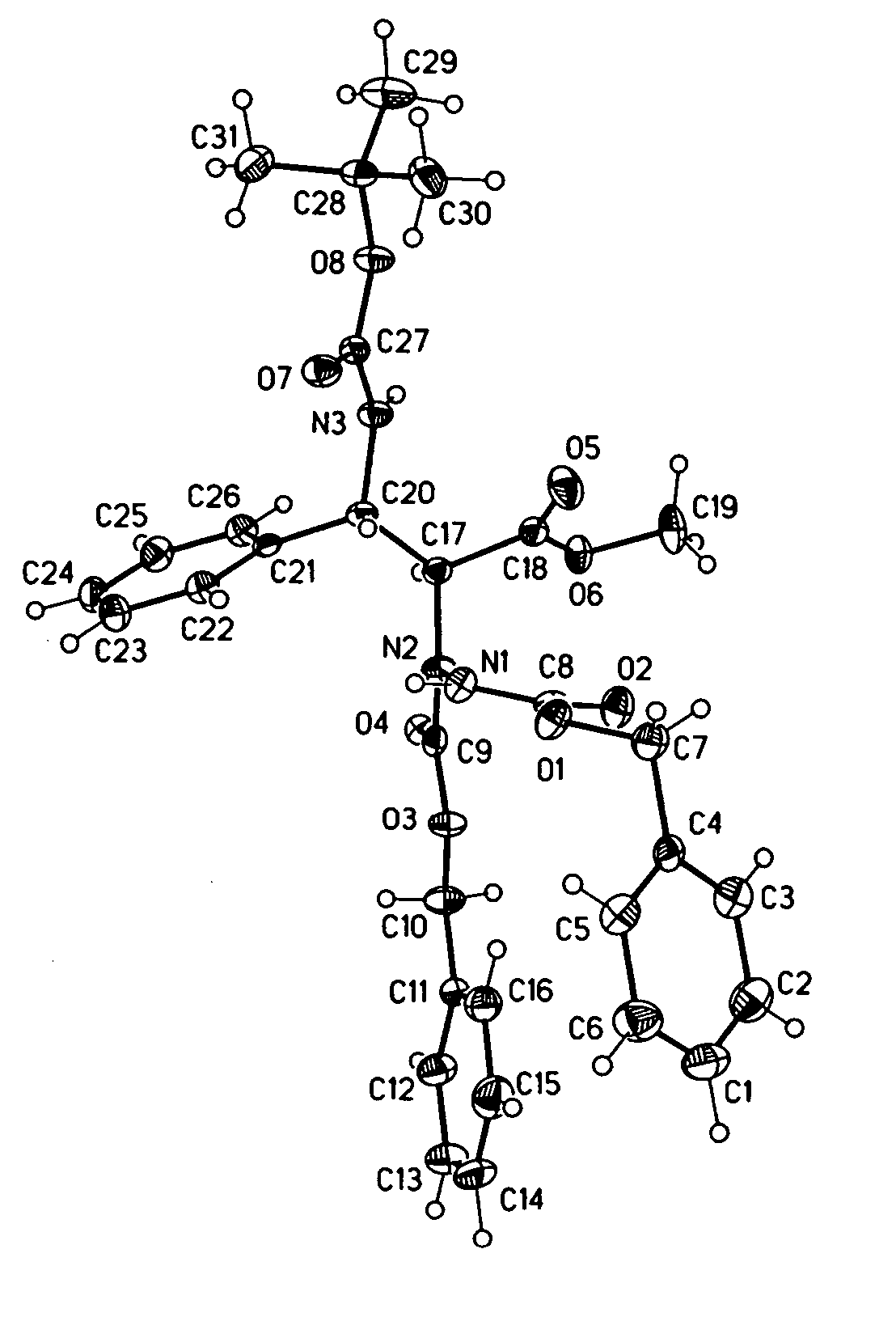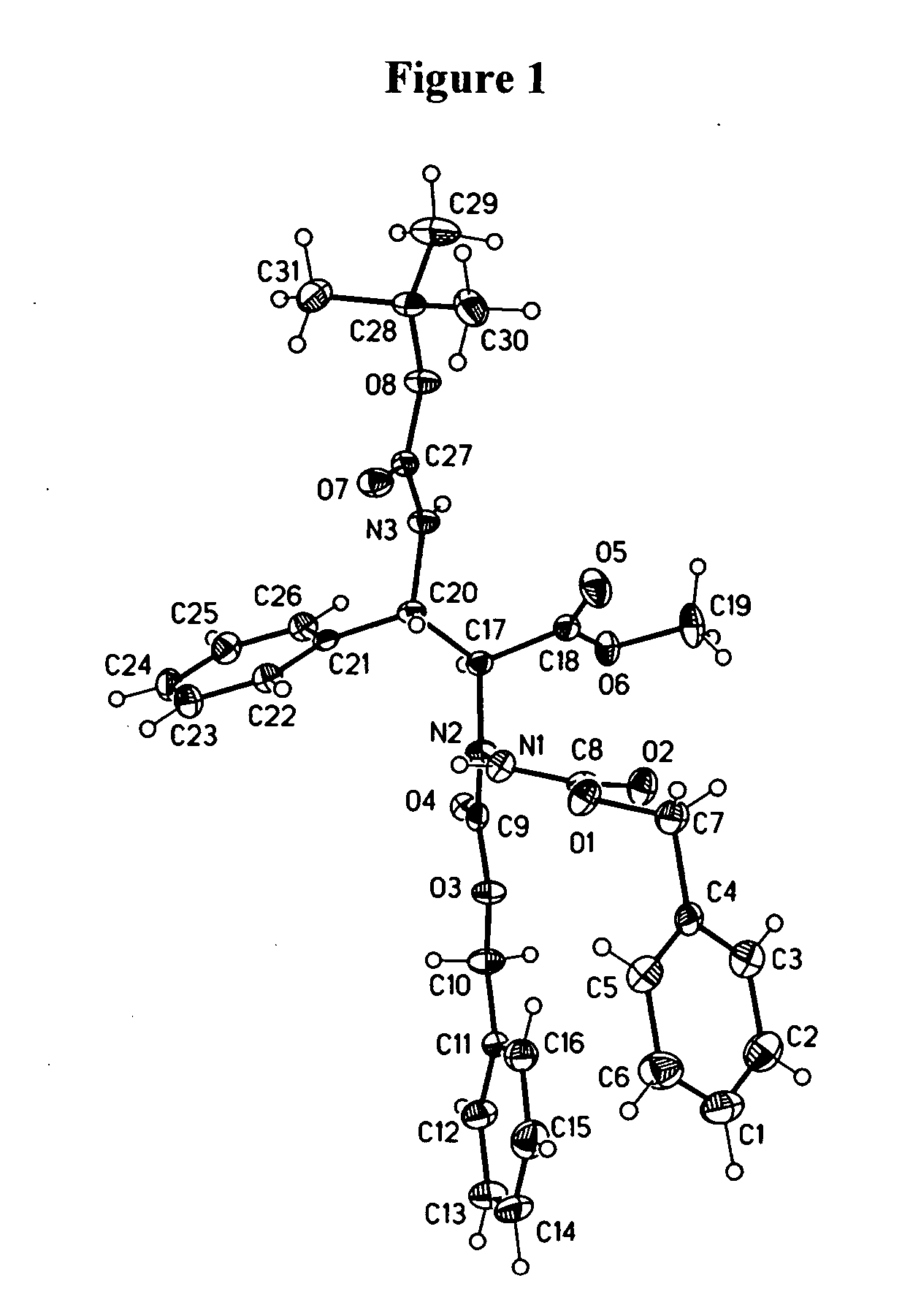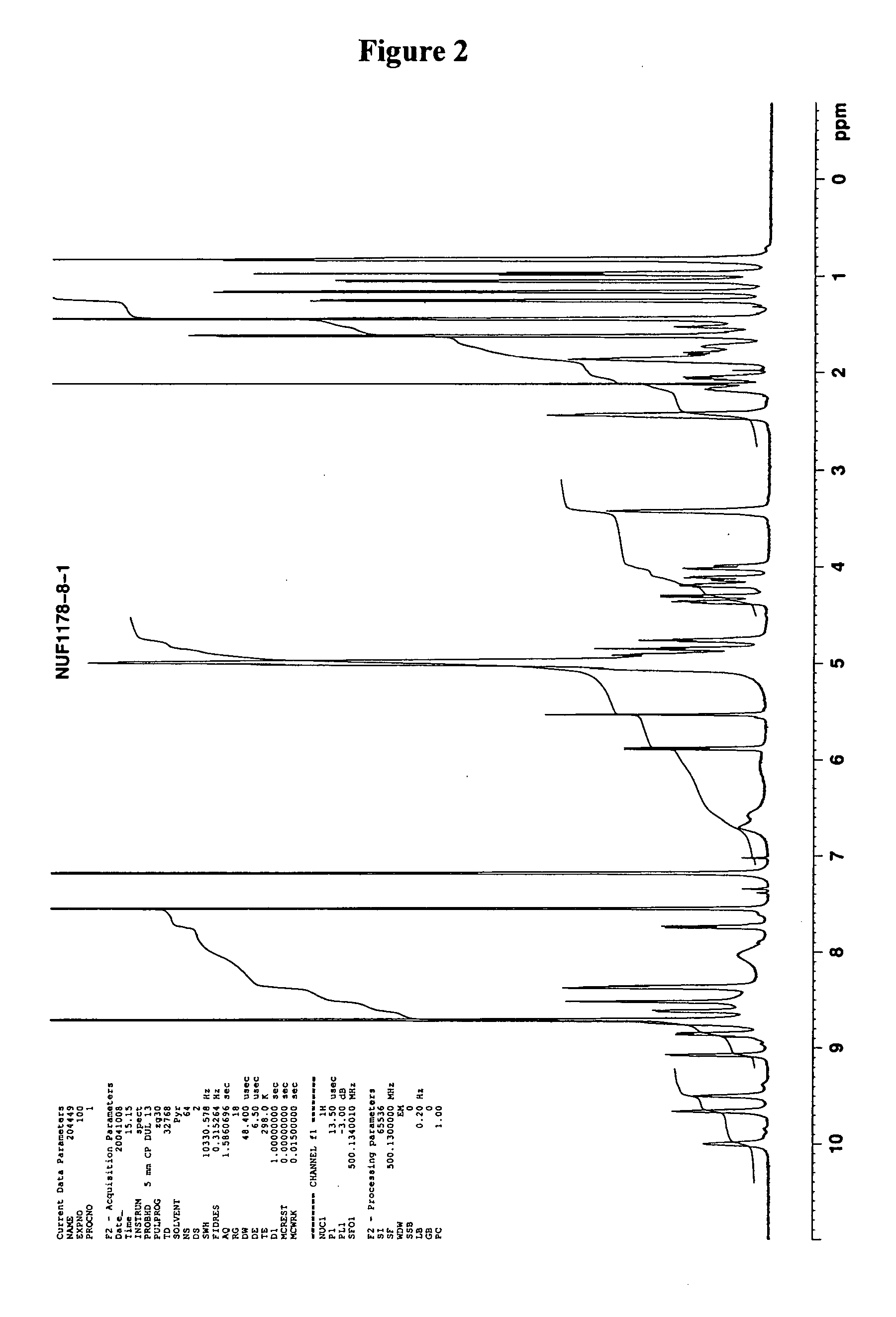Cyclic nonapeptide amides
a technology of cyclic nonapeptides and amides, which is applied in the direction of antibacterial agents, peptide/protein ingredients, drug compositions, etc., can solve the problems of insufficient stability of many natural products, and achieve the effects of improving antibacterial activity, reducing nephrotoxicity, and improving tolerability
- Summary
- Abstract
- Description
- Claims
- Application Information
AI Technical Summary
Benefits of technology
Problems solved by technology
Method used
Image
Examples
example 1a
D-Leucyl-N1-(3S,6S,12S,15S,18R,21S,24S,27S,28R)-6-[(1S)-2-amino-1-hydroxy-2-oxoethyl]-18-(3-{[amino(imino)methyl]amino}propyl)-12-[(1S)-1-hydroxyethyl]-3-(hydroxymethyl)-24-[(1R)-1-hydroxy-2-methylpropyl]-21-isobutyl-15-[(1S-1-methylpropyl]-2,5,8,11,14,17,20,23,26-nonaoxo-28-phenyl-1-oxa-4,7,10,13,16,19,22,25-octaazacyclooctacosan-27-yl}-L-leucinamide bistrifluoroacetate (lysobactin)
[0365]
[0366] Fermentation:
[0367] Culture Medium:
[0368] YM: yeast-malt agar: D-glucose (4 g / l), yeast extract (4 g / l), malt extract (10 g / l), 1 liter of Lewatit water. Before sterilization (20 minutes at 121° C.), the pH is adjusted to 7.2.
[0369] RPM: mannitol (5.4 g / l), yeast extract (5 g / l), meat peptone (3 g / l).
[0370] Working preserve: The lyophilized strain (ATCC 53042) is grown in 50 ml of YM medium.
[0371] Flask fermentation: 150 ml of YM medium or 100 ml of HPM medium in a 1 l Erlenmeyer flask are inoculated with 2 ml of the working preserve and allowed to grow on a shaker for 30-48 hours at 2...
example 2a
Mixture of dihydrolysobactin trifluoroacetate {D-Leu-Leu-Phe-[(3R)-Leu(3-OH)]-Leu-D-Arg-Ile-aThr-Gly-[(3S)-3-Asn(3-OH)]-Ser trifluoroacetate} and octahydrolysobactin trifluoroacetate {D-Leu-Leu-Ala(3-cyclohexyl)-[(3R)-Leu(3-OH)]-Leu-D-Arg-Ile-aThr-Gly-[(3S)-3-Asn(3-OH)]-Ser trifluoroacetate}
[0387]
[0388] Lysobactin bistrifluoroacetate (Example 1A, 500 mg, 0.33 mmol) is dissolved in isopropanol / water 2:1 (30 ml). Under an argon protective gas atmosphere, palladium on carbon (10%; 100 mg) is added. The reaction mixture is (after degassing) stirred in a pressure autoclave under 80-70 bar hydrogen pressure and at RT for 48 h. For the reaction, palladium on carbon (10%; 100 mg) is again added. The reaction mixture is (after degassing) stirred again in a pressure autoclave under 80-70 bar hydrogen pressure and at RT for 48 h. Now, no lysobactin is detectable any more by means of HPLC (Method 2). The reaction mixture is filtered through a glass frit (pore size 4) or through kieselguhr, conc...
example 3a
[(3R)-3-Hydroxy-L-leucyl]-L-leucyl-D-arginyl-L-isoleucyl-L-allothreonyl-glycyl-[(3S)-3-hydroxy-L-asparaginyl]-L-serine trifluoroacetate {Edman3.0 degradation product trifluoroacetate}
[0389]
[0390] 775 mg of dihydrolysobactin and octahydrolysobactin are dissolved in 77.5 ml of methanol and then 667 ml of cleavage buffer (0.1 M ammonium hydrogen carbonate solution / 0.5 M urea, pH 8) are added. Before the addition of enzyme, the solution is heated to 37° C. in a drying cabinet. 31 mg of chymotrypsin (31 ml of chymotrypsin solution in 1:1 water / ethylene glycol, 1 mg / ml; 1:25; preheated to 37° C.) are added and the reaction is performed at 37° C. After 60 min, the enzyme reaction is stopped with 30 ml of acetonitrile and about 6 ml of TFA. The pH of the solution is between 1-2. The solution can be stored at −20° C. until the preparative separation.
[0391] Preparative Separation of the Fragments 1-3 and 4-11
[0392] About 800 ml of the cleavage solution are filtered through a filter (0.2 μm)...
PUM
| Property | Measurement | Unit |
|---|---|---|
| temperature | aaaaa | aaaaa |
| temperature | aaaaa | aaaaa |
| flow rate | aaaaa | aaaaa |
Abstract
Description
Claims
Application Information
 Login to View More
Login to View More - R&D
- Intellectual Property
- Life Sciences
- Materials
- Tech Scout
- Unparalleled Data Quality
- Higher Quality Content
- 60% Fewer Hallucinations
Browse by: Latest US Patents, China's latest patents, Technical Efficacy Thesaurus, Application Domain, Technology Topic, Popular Technical Reports.
© 2025 PatSnap. All rights reserved.Legal|Privacy policy|Modern Slavery Act Transparency Statement|Sitemap|About US| Contact US: help@patsnap.com



